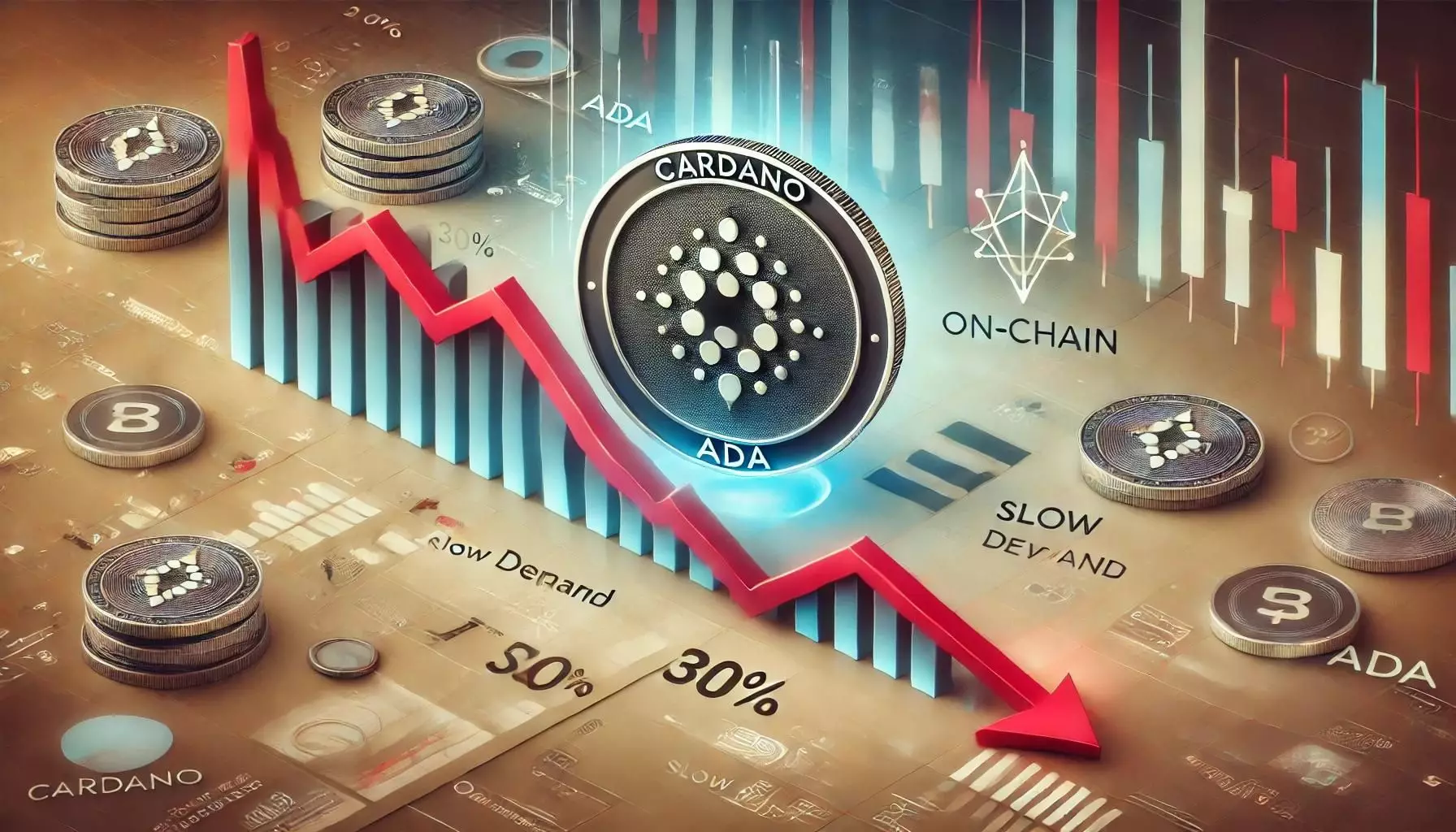In the ever-evolving world of cryptocurrencies, Cardano (ADA) has recently found itself in the spotlight due to a significant surge in price, attributed mainly to the Federal Reserve’s announcement of interest rate cuts. This development sparked a renewed sense of enthusiasm across the crypto market, with ADA experiencing a notable 26% increase within a two-week span. However, amidst this euphoria, there exists an undercurrent of caution among analysts and investors, who are scrutinizing the sustainability of this price movement.
Despite the uplifting rally, Cardano’s price faced challenges in maintaining its ascent. The cryptocurrency was unable to close above a crucial resistance level, raising red flags about the potential fragility of the uptrend. This inability to break decisively through resistance points is often a critical factor in the evaluation of a bullish market condition. A failure to maintain momentum can signify underlying weaknesses that might not be immediately visible, leaving investors anxious about the stability of their investments.
On-chain data analysis from Santiment paints a rather cautious picture. It indicates a concerning decline in demand for ADA, which, when coupled with decreased network activity, suggests a possible thinning of buying pressure. This combination of factors lends a degree of uncertainty to the current rally, prompting investors to remain vigilant and keep a close watch on any forthcoming developments in the market.
Warnings from On-Chain Data
The warning signs concerning Cardano’s price trajectory have indeed grown more pronounced, particularly as data shows a significant increase in selling pressure. This is exemplified by the daily active-address (DAA) divergence metric, which currently displays a troubling negative reading of -43.3%. This metric serves as a tool for evaluating the relationship between price shifts and user engagement on the network. A consistently negative reading, as observed since early September, may indicate that any gains made by ADA could be more reflective of broader market sentiment rather than intrinsic demand for the cryptocurrency itself.
This disconnect between price growth and genuine demand poses a risk for a swift correction. Traders are acutely aware that without sufficient buyer enthusiasm to match the recent price increases, ADA could be vulnerable to a substantial pullback. As traders begin to realize profits from the rally, the pressure to sell could exacerbate the decline, leading to a potential revisit of earlier low points.
As of now, ADA is trading around $0.38, following a slight 10% dip from its daily 200 exponential moving average (EMA) situated at $0.41. This EMA has solidified itself as a pivotal resistance zone after the price formed a modest local high. If ADA hopes to confirm a bullish trend for the weeks to come, it must first reclaim the $0.41 level and then strive to push past an even more critical resistance at $0.45. The failure to break through these thresholds may lead to increased selling pressure, compounding fears of a profound market correction.
Analysts are wary that a failure to surmount these resistance levels could see ADA’s value under pressure, with projections estimating a potential drop of around 30%. Such a decline would not only strip away recent gains but might also bring the price perilously close to its yearly low of approximately $0.27.
Given the current market volatility and prevailing uncertainties, traders and investors are faced with a pivotal moment regarding ADA’s price trajectory. The next few days could prove crucial, dictating whether Cardano will experience a bullish breakout or succumb to a deeper correction. With mixed signals emanating from technical indicators and on-chain data, stakeholders in the Cardano ecosystem must navigate this landscape cautiously. The question remains—will the optimism surrounding Cardano in the face of external market influences prove sustainable, or will it unravel, leading the cryptocurrency back to familiar lows? The outcome could have implications not only for ADA but also for broader sentiments within the cryptocurrency market.

